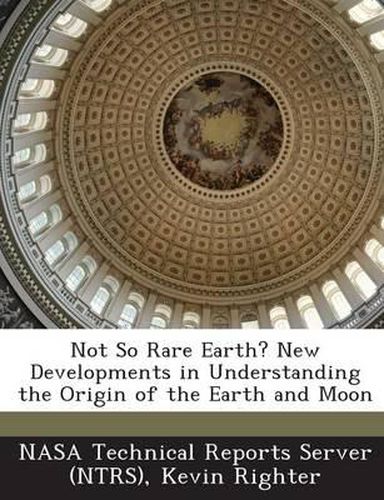Readings Newsletter
Become a Readings Member to make your shopping experience even easier.
Sign in or sign up for free!
You’re not far away from qualifying for FREE standard shipping within Australia
You’ve qualified for FREE standard shipping within Australia
The cart is loading…






A widely accepted model for the origin of the Earth and Moon has been a somewhat specific giant impact scenario involving an impactor to proto-Earth mass ratio of 3:7, occurring 50-60 Ma after T(sub 0), when the Earth was only half accreted, with the majority of Earth’s water then accreted after the main stage of growth, perhaps from comets. There have been many changes to this specific scenario, due to advances in isotopic and trace element geochemistry, more detailed, improved, and realistic giant impact and terrestrial planet accretion modeling, and consideration of terrestrial water sources other than high D/H comets. The current scenario is that the Earth accreted faster and differentiated quickly, the Moon-forming impact could have been mid to late in the accretion process, and water may have been present during accretion. These new developments have broadened the range of conditions required to make an Earth-Moon system, and suggests there may be many new fruitful avenues of research. There are also some classic and unresolved problems such as the significance of the identical O isotopic composition of the Earth and Moon, the depletion of volatiles on the lunar mantle relative to Earth’s, the relative contribution of the impactor and proto-Earth to the Moon’s mass, and the timing of Earth’s possible atmospheric loss relative to the giant impact.
$9.00 standard shipping within Australia
FREE standard shipping within Australia for orders over $100.00
Express & International shipping calculated at checkout
A widely accepted model for the origin of the Earth and Moon has been a somewhat specific giant impact scenario involving an impactor to proto-Earth mass ratio of 3:7, occurring 50-60 Ma after T(sub 0), when the Earth was only half accreted, with the majority of Earth’s water then accreted after the main stage of growth, perhaps from comets. There have been many changes to this specific scenario, due to advances in isotopic and trace element geochemistry, more detailed, improved, and realistic giant impact and terrestrial planet accretion modeling, and consideration of terrestrial water sources other than high D/H comets. The current scenario is that the Earth accreted faster and differentiated quickly, the Moon-forming impact could have been mid to late in the accretion process, and water may have been present during accretion. These new developments have broadened the range of conditions required to make an Earth-Moon system, and suggests there may be many new fruitful avenues of research. There are also some classic and unresolved problems such as the significance of the identical O isotopic composition of the Earth and Moon, the depletion of volatiles on the lunar mantle relative to Earth’s, the relative contribution of the impactor and proto-Earth to the Moon’s mass, and the timing of Earth’s possible atmospheric loss relative to the giant impact.